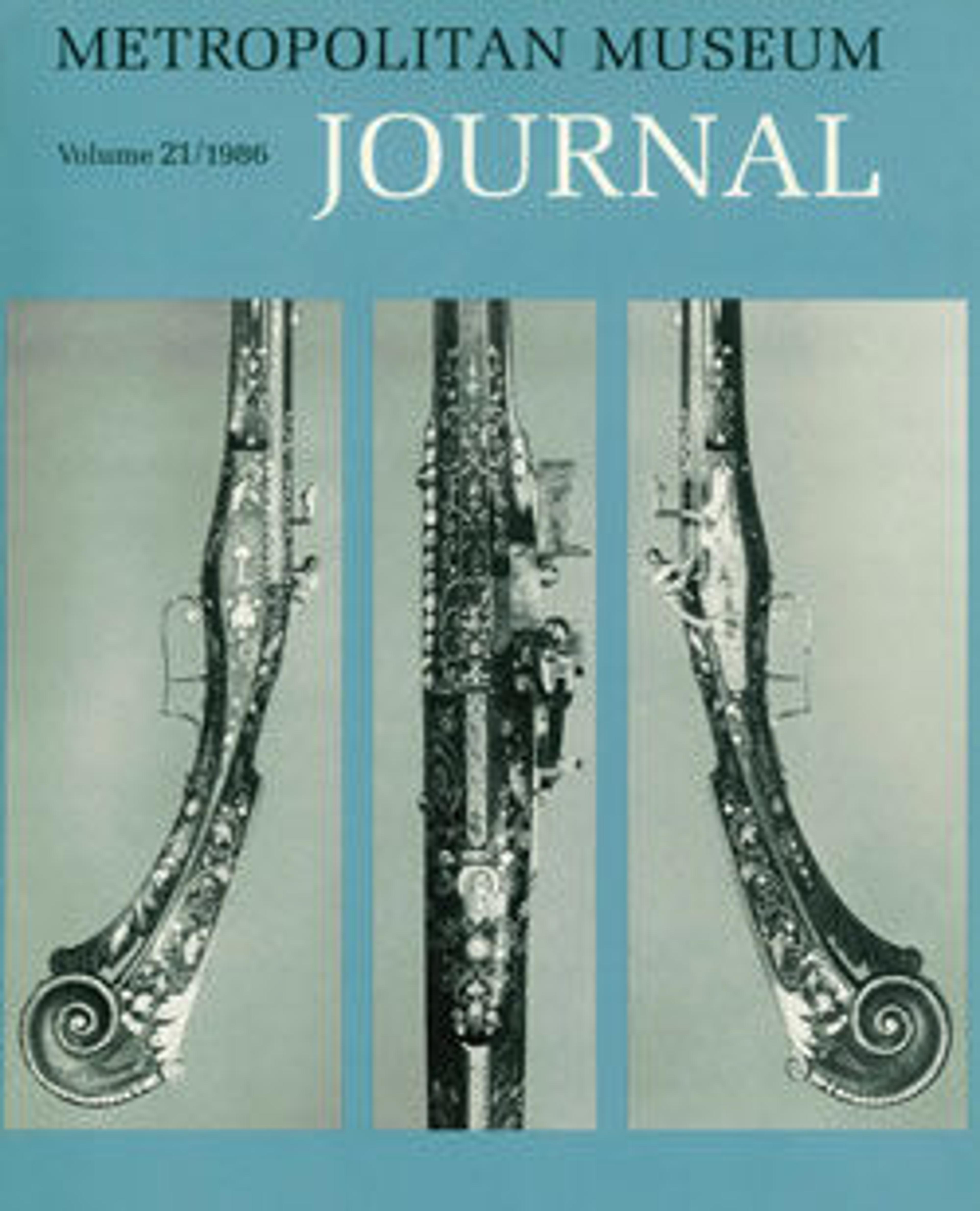Vertumnus and Pomona from a set of Scenes from Operas
This tapestry was designed by Boucher as part of a larger series depicting narratives popular in French opera. This episode shows the seduction of Pomona, the chaste goddess of fruit trees and gardens, by Vertumnus, the Roman divinity of the seasons. Roman poet Ovid recounted in his Metamorphoses how Vertumnus assumed seven different disguises to woo Pomona (a harvester, a farmer, a herdsman, a vintner, a fruit-picker, a solder and a fisherman), none of which caught her interest. Eventually, he assumed the appearance of an old woman who recounted to Pomona a cautionary tale of unrequited love and harsh rebuttals; sensing her newfound openness to romantic overture at the culmination of the sad story, Vertumnus revealed his true appearance. This story formed the core of Boucher's inspiration: Pomone, the first opera in French, with music by Robert Cambert and a libretto by the Abbé Perrin, presented in 1671.
Alongside scenes from the operas Armide (by Philippe Quinault and Jean Baptiste Lully, 1686), Issé (by Destouches and Lamotte, 1697) and Venus and Cupid (protagonists of multiple French operas of the period), the royal manufactory at Beauvais wove this series six times between 1758 and 1776.
The tapestry has lost its original ornamental border. In addition, its palette has suffered considerably with fading, partly a result of the unstable dyes French weavers were experimenting with during this period. Its predominantly silken wefts, which will originally have provided a glossy shine and enabled fine, delicate detailing, have likewise suffered considerably with age, becoming brittle and degraded. A fine record of Boucher's original palette and intentions can be admired in the cartoon, which survives in the collection of the de Young Museum, Fine Arts Museums of San Francisco.
Alongside scenes from the operas Armide (by Philippe Quinault and Jean Baptiste Lully, 1686), Issé (by Destouches and Lamotte, 1697) and Venus and Cupid (protagonists of multiple French operas of the period), the royal manufactory at Beauvais wove this series six times between 1758 and 1776.
The tapestry has lost its original ornamental border. In addition, its palette has suffered considerably with fading, partly a result of the unstable dyes French weavers were experimenting with during this period. Its predominantly silken wefts, which will originally have provided a glossy shine and enabled fine, delicate detailing, have likewise suffered considerably with age, becoming brittle and degraded. A fine record of Boucher's original palette and intentions can be admired in the cartoon, which survives in the collection of the de Young Museum, Fine Arts Museums of San Francisco.
Artwork Details
- Title:Vertumnus and Pomona from a set of Scenes from Operas
- Designer:Designed by François Boucher (French, Paris 1703–1770 Paris)
- Manufactory:Produced in the Beauvais
- Maker:Woven under the direction of André Charlemagne Charron (French, active 1754–80)
- Date:1758–76
- Culture:French, Beauvais
- Medium:Wool, silk (21-22 warps per inch, 8 per cm.)
- Dimensions:H. 124 1/2 x W. 81 1/2 in. (316.2 x 207 cm)
- Classification:Textiles-Tapestries
- Credit Line:Bequest of Benjamin Altman, 1913
- Object Number:14.40.708
- Curatorial Department: European Sculpture and Decorative Arts
More Artwork
Research Resources
The Met provides unparalleled resources for research and welcomes an international community of students and scholars. The Met's Open Access API is where creators and researchers can connect to the The Met collection. Open Access data and public domain images are available for unrestricted commercial and noncommercial use without permission or fee.
To request images under copyright and other restrictions, please use this Image Request form.
Feedback
We continue to research and examine historical and cultural context for objects in The Met collection. If you have comments or questions about this object record, please contact us using the form below. The Museum looks forward to receiving your comments.
